Here’s an extensive list of the Best Medicinal Plants with their Benefits and uses so you can make the most of your lovely foliage!
Don’t know what is plant medicine? Looking for the best medicinal plants list? You’re in the right place. These medicinal plants names and pictures will keep you healthy and fit!
Expired Medicines & Supplements You Can Use in Garden
Best Medicinal Plants with Their Benefits
1. Reishi Mushroom
Botanical Name: Ganoderma lucidum
Common Names: Basidiomycetes Mushroom, Champignon Reishi, Ganoderma lucidum, Ling Chih, Ling Zhi, Mushroom of Immortality, Rei-Shi
Reishi mushroom, also known as lingzhi, is a fungus that belongs to the Ganodermataceae family. It’s a fan-shaped mushroom and orange to reddish brown in color. Some of the benefits that reishi exhibits as plant medicine are:
- Boosts the immune system
- Reduces fatigue
- Lowers blood pressure
- Could improve liver function
- Helpful in diabetes
- Therapeutic for neurodegenerative disorders
- May help in eliminating cancer cells
Note: They are generally safe to use, yet they can lead to digestive disorders in some people. You must consult a doctor before taking them, especially if you’re pregnant, breastfeeding, have blood disorders, or is about to have surgery.
2. Jiaogulan

Botanical Name: Gynostemma pentaphyllum
Common Names: Five Leaf Ginseng, Poor Man’s Ginseng, Southern Ginseng, Miracle Grass, Fairy Herb, Sweet Tea Vine, Gospel Herb, Immortality Herb, Immortality Tea
Gynostemma is also known to be “the herb of immortality” because it could make you feel like an immortal by boosting your immunity. It produces a beneficial compound- ginsenosides, which is rare in any other plant. The following are medicinal herbs and their uses:
- Fights allergies
- Protects brain cells from damage
- Helps in weight loss
- Regulates blood sugar level
- May Fight cancer cells
- Reduces asthma symptoms and other heart diseases
- Boosts Liver Function
Note: While it’s possibly safe, some people can suffer from severe nausea and an increase in bowel movements from these medicinal plants. It may reduce the blood clotting process and might adversely affect the blood sugar levels of diabetic people. Avoid intaking the herb if you’re pregnant, breastfeeding, or healing a recent surgery. Consult your doctor whenever required.
3. Chamomile
Botanical Name: Matricaria recutita
Common Names: German chamomile, Roman chamomile, English chamomile,
Camomilla, and Flos Chamomile
Chamomile is a European plant of the daisy family with white and yellow flowers and a fresh aroma. People use it in manufacturing almost everything, from cosmetics to beverages, for years. Here are some of these yellow flowered medicinal plant uses:
- Treats Insomnia
- Boosts Up Immunity
- Helpful In Cold
- Reduces Period Cramps
- Treats wounds and other skin conditions
- Reduces stress
- Improves facial skin
- Treats Sunburn
Note: If you notice any skin allergy, eye irritation, or other hypersensitivity reactions, contact your doctor immediately. Avoid applying chamomile around your eyes and before applying it on your skin, do a patch test first.
4. Dandelion
Botanical Name: Taraxacum
Common Names: Bitterwort, blow-ball, cankerwort, clockflower, Irish daisy, lion’s tooth, piss-in-bed, pissinlit, priest’s crown, puffball, swine’s snout, telltime, yellow gowan
Dandelion is a weed belonging to the daisy family and is easily available in most parts of the world. They contain high levels of protein and a variety of vitamins and minerals, which makes them perfect survival food. Below are the potential health benefits of this plant medicine:
- Fights Inflammation
- Controls Blood Sugar Level
- Reduces Cholesterol
- Lowers Blood Pressure
- Helps In Weight Loss
- Treats Constipation
- Boosts Immune System
Note: If you take dandelion by mouth and apply it to sensitive skin, it may lead to allergic reactions. If by any chance you seem to have an allergy, consult your doctor before taking this plant. Pregnant and breastfeeding women should avoid intake.
5. Lady Ferns
Botanical Name: Athyrium filis-femina
Common Names: Lady Fern, Common ladyfern, Subarctic ladyfern, Asplenium ladyfern, Southern Lady Fern, Tatting Fern
Lady fern, also known as shuttlecock fern or eagle fern. It commonly grows across the US and in some parts of Europe, Canada, and Australia. Its leaves contain a high amount of protein, zinc, calcium, potassium, vitamin A, vitamin B, and B complex. The list below contains some health benefits of lady fern:
- Benefits the bones and teeth
- Great for eyesight
- Relieves Constipation
- Helps in body aches
- Great for heart
- Improves appetite
Note: Not enough information is available to question the safety of this plant yet. Avoid it if you’re pregnant.
Check out 30 Best Ferns for Containers that Grow Indoors & Outdoors Easily here
6. Ginger
Botanical Name: Zingiber officinale
Common Names: Jiang, gingembre, ingwer, adrak, kon-gang, adi
Ginger is one of the most delicious and healthiest spices available on Earth. Not only it adds a tasty flavor to the food, but it’s also full of nutrients and bioactive compounds. Some other benefits include:
- Treats motion sickness
- Cures chronic indigestion
- Helps in menstrual pain
- Lowers blood cholesterol
- May protect against Alzheimer
- Fights Infections
Note: Excessive intake of ginger might increase bleeding tendency and promote diarrhea. Throat irritation, abdominal discomfort, and central nervous system depression are some other downfalls of ginger. However, you must not worry about these side effects if you’re intaking it in the prescribed dose.
7. Schisandra Berries
Botanical Name: Schisandra chinensis
Common Names: Beiwuweizi, Chinese Mongolavine, Chinese Schizandra, Chosen-Gomischi, Five-Flavor-Fruit, Fructus Schisandrae, Gomishi, Magnolia Vine, Northern Schisandra, Wuhzi, Wuweizi
A fruit-bearing vine, these berries are purple-red in color and have four tastes- sweet, salty, bitter, and sour. It has a variety of health benefits, which you can read below:
- Boosts energy at the cellular level
- Improves the functioning of adrenal glands
- Relieves stress
- Effective for hepatitis
- Improves mental health- concentration, attention, and intellect
Note: Schisandra can stimulate the central nervous system, which in turn can adversely affect people with epilepsy. These berries can worsen peptic ulcers and high brain pressure.
8. Golden Root
Botanical Name: Rhodiola rosea
Common Names: Rose root, roseroot, Aaron’s rod, Arctic root, king’s crown, lignum rhodium, orpin rose
Also known as “golden root,” this fragrant root of a herb has adaptogenic qualities to eliminate stressors. The extract grows in northern climates in places like Asia, Russia, Europe, and Greece. This herb is significantly used as a natural remedy for ages to treat multiple illnesses:
- Helps with mental or physical fatigue
- Might provide some benefits for bladder cancer
- Improves the symptoms of depression
- Lowers anxiety
- May solve sexual problems
- Slowers aging process
Note: For now, there are no scientifically proven downfalls of using this herb. However, to be on the safe side, avoid it if you have some allergies.
9. Sage
Botanical Name: Salvia officinalis
Common Names: Garden sage, true sage, salvia real, echter salbei
Sage is a woody herb and belongs to the mint family. It’s a staple ingredient in many cuisines around the world and is proven to be one of the healthiest food. Sage contains a variety of volatile oils, flavonoids, phenolic acids. It has a soft and sweet-savory flavor and wonderful health-promoting properties:
- Alleviates Diarrhea
- Supports bone health
- Slowers skin aging
- Lowers bad LDL cholesterol
- Effective for Alzheimer
- Sharpens Memory
- Treats inflammation
- Helps in diabetes
Note: Sage is a safe herb with no side effects. To be on the safe side, never consume sage excessively, especially in the tea and essential oil form.
10. Marigold
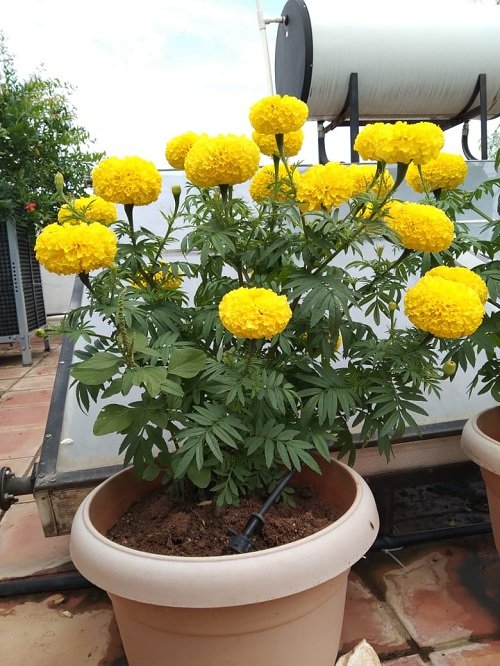
Botanical Name: Tagetes
Common Names: Caltha, Ganda, Gols bloom, Garden Marigold, Gold bloom, Holligold, Marybud, Pot Marigold
Marigold is a subdivision of perennial plants in the sunflower family. It’s usually yellow, orange, red, and maroon in appearance and belongs to the kingdom- Plantae. There are many more benefits of marigolds besides their bright beauty:
- Boosts Immune System
- Alleviates skin diseases
- Aids menstrual pain
- Treat mouth ulcers
- Provides relief from joint pain
- Cures fungal infections
- Reduce eye infection and conjunctivitis
- Repels bugs and mosquitoes
Note: Marigold can sometimes result in an allergic reaction in form of rash, itchiness, trouble breathing, and dizziness. Seek medical attention if you notice any of the above or other effects.
11. Cayenne Pepper
Botanical Name: Capsicum annuum ‘acuminatum’
Common Names: Capsicum frutescens, guinea pepper, african bird pepper,
Cayenne pepper is a type of capsicum annum and is usually used to add a chilly flavor to dishes. This pepper has been a part of native american plant medicine and dishes for years. The ingredient capsaicin is held responsible for the various health benefits of this hot chili. Here are cayenne pepper medicinal plants and their uses:
- Enhances blood circulation
- Aids bad throat
- Relieves a headache
- Clears nasal congestion
- Promotes weight loss
- Boosts metabolism
- Improves Psoriasis
Note: Cayenne peppers are safe to eat when within a limit; excessive intake can upset your stomach.
12. Coneflower
Botanical Name: Echinacea
Common Names: American Cone Flower, Black Sampson, Black Susans, Brauneria Angustifolia, Comb Flower, Hedgehog, Helichroa Purpurea, Indian Head, Kansas Snakeroot, Red Sunflower, Rock-Up-Hat, Rudbeckia Pourpre, Scurvy Root, Snakeroot
This medicinal plant is native to the eastern areas of the rocky mountains of the United States. The herb is long used as a herbal remedy by the Indian tribes. There are many commercial echinacea products available in the market in the form of tablets, juice, and tea. Listed are some of the benefits of this herb:
- Effective for cold
- Reduces anxiety
- Promotes healthy cell growth
- Aids breast cancer
- Helps inflammation
Note: Most common side effects of echinacea include nausea and stomach pain. If you suffer from an autoimmune disease, you must refrain from using this herb.
13. California Poppy
Botanical Name: Eschscholzia californica
Common Names: Golden poppy, California sunlight, cup of gold, yellow poppy
California poppy is a medicinal plant that contains soothing properties. Also, the herb consists of vitamins A, C, E, calcium, and magnesium. The plant is such great a herb that April 6 is officially named “California Poppy Day.”
- Effective for insomnia
- Treats Anxiety
- Highly effective for nervous disorders
- Acts as a sedative agent
Note: It can slow down the central nervous system, which can cause sleepiness and other lethargic effects.
14. Blood Flower
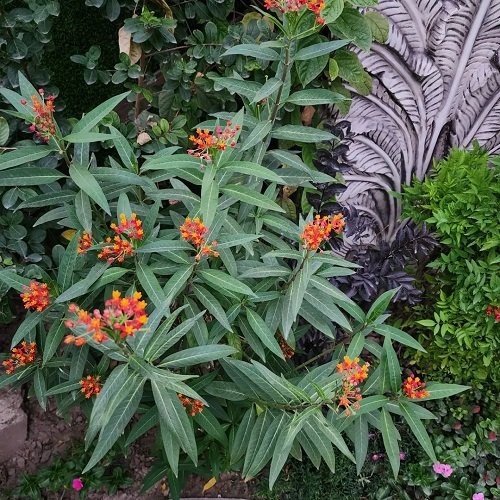
Botanical Name: Asclepias curassavica
Common Names: Tropical milkweed, cotton bush, hierba de la cucaracha, Mexican butterfly weed, redhead, scarlet milkweed, wild ipecacuanha
Bloodflower is a garden plant that tops the medicinal plants chart. It flowers nearly year-round with vivid red blooms. Though it has plenty of health benefits, you should be cautious when using this plant because its stems and leaves release a poisonous milky sap, which can potentially damage your eyes.
- Counteracts ringworm
- Acts against pain
- Cures skin ulcers
- Stimulates the central nervous system
- Fights Jaundice
- Refines blood circulation
Note: It’s advised to consult your doctor before consuming the blood flower.
15. Thyme

Botanical Name: Thymus vulgaris
Common Names: Common thyme, English thyme, garden thyme
Thyme is among the most popular herbs from the mint family. It has been used to treat a range of symptoms along with multiple dietary uses. Also, this ornamental herb has antibacterial and insecticidal properties. Commercially, the herb is available in the forms of essential oils and tea.
- Can Treat Arthritis
- Potent for stomach ache, diarrhea, and sore throat
- Lowers blood pressure
- Cures a cough
- Boosts immunity
Note: Thyme is safe to use by adults as well as children if taken in normal food amounts.
10 Best Thyme Growing Tips | Growing Thyme in Containers
16. Korean Mint
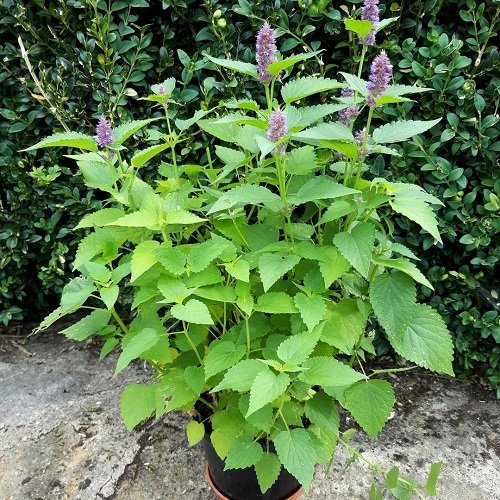
Botanical Name: Agastache Rugosa
Common Names: Blue licorice, purple giant hyssop, indian mint, wrinkled giant hyssop, huo xiang, chinese patchouli
As the name suggests, Korean mint is a short-lived herb belonging to the medicinal plants chart. Its purple flower spikes are usually two to four inches tall. The leaves of this medicinal plant contribute to an uplifting tea and can provide a unique seasoning to your food.
- Helpful in nausea
- Eliminates fever and congestion
- Effective in diarrhea
- Might cure hepatitis
Note: The plant is advisable to consume in a recommended dosage.
17. Alfalfa
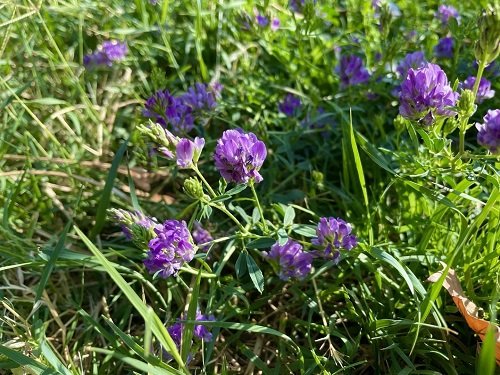
Botanical Name: Medicago Sativa
Common Names: Burgundy clover, purple medick, lucerne, holy hay
Perennial flowering plants used for medicine in the family Fabaceae, these are mostly used for grazing as well as green manure in farming land. Several health tonics, tea, supplements, and hair growth tonics are available in the market as a substitute for naturally growing alfalfa in your yard.
- Cleanses out impurities from your body
- Promotes hair growth
- Controls cholesterol
- Aids in weight loss
- Prevents allergies
- Combats depression
- Limits excessive bleeding
Note: Alfalfa seeds might prove unsafe if taken for long term. It might as well result in an allergy similar to lupus erythematosus.
18. Blackberries
Botanical Name: Rubus fruticosus L. agg.
Common Names: Bramble, european blackberry, scaldhead, zarzamora, murier, amora silvestre
Blackberry is an edible fruit that belongs to the Rosaceae family. The dark color of the berries indicates a high concentration of antioxidants. The fruit is low in calories and rich in fiber and nutrients, and has antiviral and antibacterial properties.
- Supports oral health
- May boost the health of your brain
- Promotes bone development
- Increases your metabolism
- Aids digestive problems
- Hydrates and rejuvenates your skin
- Helps in treating diabetes
Note: People with sensitive stomachs can feel the urge to vomit right after eating the berries.
19. Greenthread
Botanical Name: Thelesperma
Common Names: Hopi tea greenthread, navajo tea, hopi tea
Popularly known as Indian tea, this herbal tea is an extract from a single plant indigenous to regions of the southwest. The tea is typically prepared by boiling a bundle of it in about 6 cups of water for 5-6 minutes. The tea has an aromatic taste and is among the top 5 medicinal plants and their uses are here:
- Relieves stomach ache
- Reduces fever
- Treats gonorrhea
- Improves blood circulation
- Soothes upset stomach
20. Feverfew
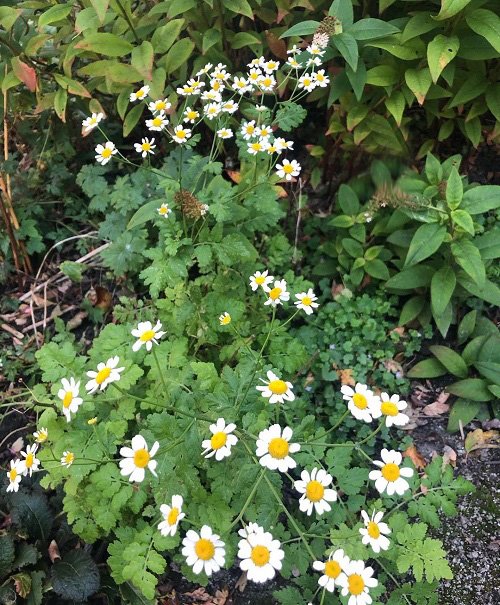
Botanical Name: Tanacetum Parthenium
Common Names: Altamisa, Bachelor’s Buttons, Chrysanthème Matricaire, Chrysanthemum parthenium, Chrysanthemum praealtum, Featherfew, Featherfoil, Flirtwort Midsummer Daisy, Grande Camomille, Partenelle, Santa Maria
These medicinal flowering plants of the daisy family are also called the bachelor’s button and are a preventative against a migraine. You can either grow your feverfew or buy dried capsules, tablets, or tinctures from a store. You can even dry the leaves at home; the result remains as potent as fresh leaves.
- May ease menstrual cramps
- Herbal alternative for autoimmune disease
- Relieves a migraine
- Lowers blood pressure
- Relief from arthritis
Note: When taken during pregnancy, it can cause UTERINE contraction. Similarly, you should not use feverfew if you are breastfeeding or have taken aspirin or other NSAIDs recently.
21. Winter Savory
Botanical Name: Satureja Montana
Common Names: Ajedrea, Calamintha montana, Herbe de Saint Julien, Mountain Savory Oil, Poivre d’Âne, Sadrée, Sarriette des Montagnes, Satureja montana, Satureja obovata, Savory
Winter Savory can grow up to one foot; it’s a deep green choice among medicinal plants and herbs that is native to warm regions of southern regions of Europe. It is a semi-evergreen herb and belongs to the family Lamiaceae.
- Fights fungal infections
- Develops blood cells
- Improves the functioning of the kidney and liver
- Maintains the level of cholesterol
- Increases Immunity
- Prevents a sore throat
Note: Special precautions must be taken by pregnant and breastfeeding women. Winter savory is likely safe to use when in a lower amount.
22. Catnip
Botanical Name: Nepeta cataria
Common Names: Catnip, Catswort, Catnep, Catrup, Catmint, Catswort, Field Balm, Nep, Herb Catta
Catnip is a perennial one among the list of medicinal herbs and can grow up to three feet high. Manufactures of medicine repeatedly use the flowering tops of the plant to help people with:
- A Natural repellent
- Treats dandruff
- Relieves cramps
- Cures Insomnia
- Aids in weight loss
- Effective for a migraine
Note: Catnip can cause drowsiness, which can reduce your productivity and can lead to vomiting as well. It’ll be better to take it in the night to learn how it works for you. Moreover, children and pregnant women must restrain from taking the herb.
23. Spinach
Botanical Name: Spinacia oleracea
Common Names: palak, épinard , spinat , spinace , espinaca , and hispane
Spinach is one among the most favored edible flowering plant, native to central and western Asia. The leaves of the plant are famous worldwide among medicinal plants and herbs. The leaves are an excellent source of vitamins K, A, and C. When you cook and eat spinach, your body absorbs a higher content of protein, fiber, thiamin, and zinc.
- Increases energy in your body
- Manages diabetes
- Lowers high blood pressure
- Promotes eye health
- Maintains healthy bones
- Relaxes your body
Note: In the worst case of spinach complication, a person may experience mild diarrhea, allergic reactions, or even kidney stones if taken regularly in big quantities.
24. Garlic
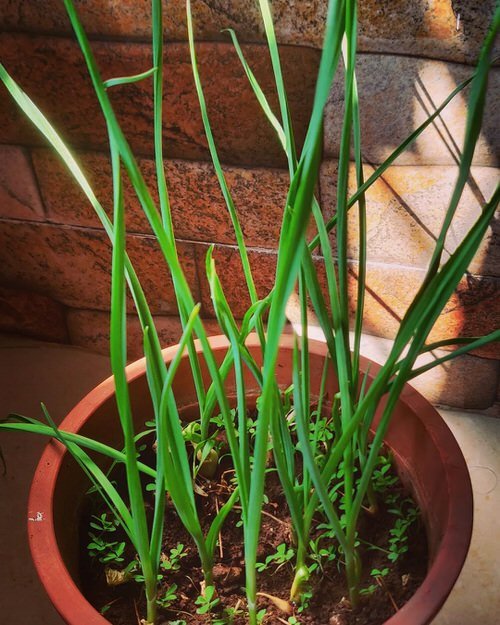
Botanical Name: Allium Sativum
Common Names: Ajo, Alho, Allii Sativi Bulbus, Allium, Allium sativum, Da Suan, Echte Rokkenbolle, Echter Knoblauch, Lasun, Maneul, Ninniku, Rason, Rocambole, Rockenbolle, Rust Treacle, Schlangenknoblauch, Stinking Rose, Suan, Thoum, Vitlok
Looking for plant based medicine? Allium sativum, commonly called garlic, is a species of the Allium family and is a common food ingredient all around the world. Not just it eases people with heart and blood issues; but it has several other health benefits too.
- Combats sickness
- Prevents Alzheimer
- Increases life-span
- Improves athletic performance
- Ends hair loss
- Clears skin impurities
Note: Before taking garlic, do enough research on the web for its interactions with various drugs present in popular medicines.
25. Peppermint
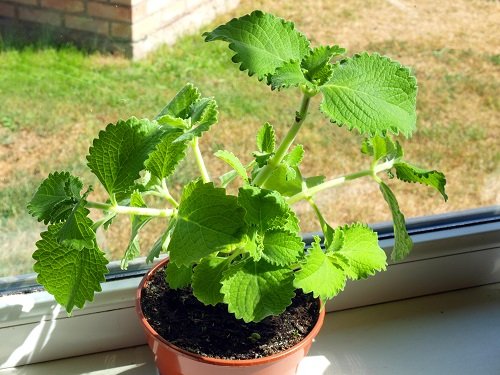
Botanical Name: Mentha × piperita
Common Names: Black Peppermint, Brandy Mint, Field Mint, Herba Menthae, Lamb Mint, Mint Balm, Paparaminta, Western Peppermint
Crossing watermint with spearmint produces the famous plant from the mint family- Peppermint. In the modern era, peppermint is favorite to flavor soft drinks, ice creams, toothpaste, and many other products. Here are some medicinal properties that it holds:
- Eases stomach disorders
- Reduces stress
- Fights bad breath
- Betters the immune system
- Relaxes muscle pain
Note: Using peppermint in normal food amounts is possibly safe. Avoid using commercial peppermint products that are coated with enteric to prevent anal burns.
26. Globe Artichoke
Botanical Name: Cynara scolymus
Common Names: Cynara, French artichoke, and green artichoke
Globe Artichoke is a perennial medicinal plant that is primarily grown for its edible and nutritious flower buds. The plant is native to the Mediterranean region. However, it’s frequently used in preparing food items in Italy, Spain, and other areas of the world. Not just in food, it’s an ingredient of much herbal tea and liqueur.
- Treats indigestion
- Cures diarrhea, flatulence, and constipation
- Balances the intestinal microbiota
- Supports gut movement
- Detoxifies the liver
Note: It might increase bile flow and therefore worsen bile duct obstruction.
Check out our article on how to grow Artichokes in Pots here
27. Tansy

Botanical Name: Tanacetum vulgare
Common Names: Wurmkraut, tanaceto, boerenwormkruid, renfana, bitter buttons common tansy, English fern, golden buttons, hindheal, parsley fern, scented fern, tanaceto, tanarida, tanacée, Rainfarn, tanaisie, tanaisie commune and erva-de-San-Marcos
Belonging to the aster family, Tansy is native to temperate Europe and Asia. Many manufacturing companies use tansy extracts to process perfumes and green dye. Tansy increases the saliva and blood flow to the tissues, curing many ailments of the mouth, stomach, pelvic area, and intestines.
- Prevents bacterial infection
- Reduces inflammation
- Effective for viral diseases
- Kills intestinal worms
- Improves appetite
Note: Tansy is poisonous when taken by mouth and can be allergic to the skin.
28. Cat’s Claw
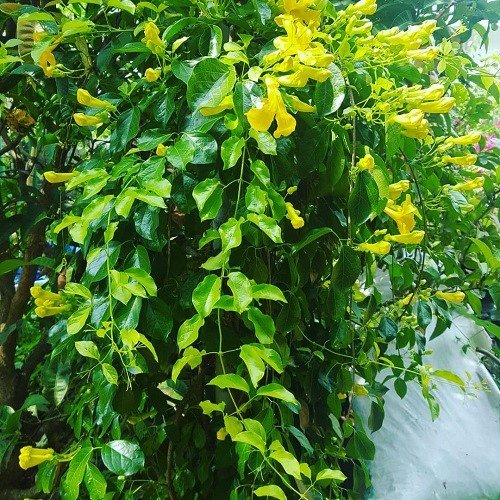
Botanical Name: Uncaria tomentosa
Common Names: uña de gato, Uncaria guianensis, Hawk’s claw, and Garabato
The claw-shaped thorns are from where the woody vine gains its unique name. The pharmaceutical industries often use the root and bark of the cat’s claw to manufacture medicines for:
- Arthritis symptoms
- Controls high blood pressure
- Detoxifies intestinal tract
- Helps in chronic fatigue syndrome
- Cures viral infections
Note: Cat’s claw is particularly safe to use by most people, but some people may react to it with a headache, nausea, and vomiting.
29. Basil
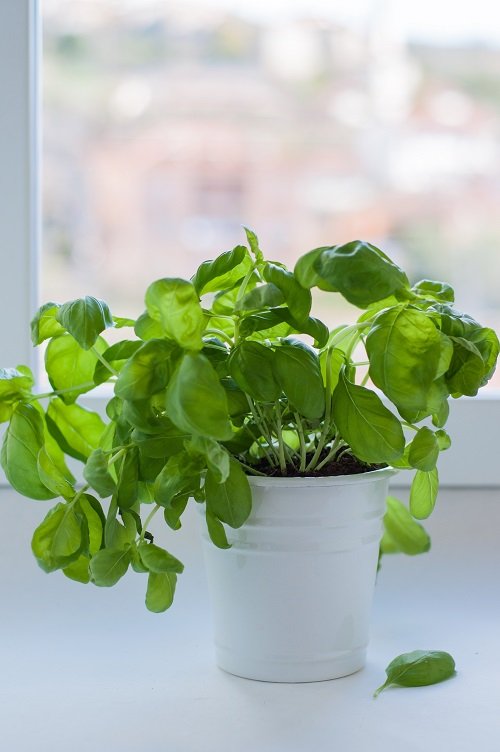
Botanical Name: Ocimum basilicum
Common Names: Albahaca, Basilic, Basilic Commun, Basilic Grand, Basilic Grand Vert, Basilic Romain, Basilic aux Sauces, Basilici Herba, Basilici Herba, Common Basil, Garden Basil, Krishna Tulsi, Munjariki, Ocimum basilicum, St. Josephwort, Surasa, Sweet Basil, Vanatulasi, Varvara, Visva Tulsi
Basil is a herb popular as a food seasoning to promote health benefits. It’s an adaptogen herb with anti-inflammatory and antioxidant properties. From slowing the aging process to building stronger immunity, the health benefits of basil are quite a lot:
- Good for digestive ailments
- Effective anti-inflammatory
- Cleanses the skin
- Fights depression
- Aids Diabetic patients
- Supports a healthy gut
- Combats bacteria
Note: The medicinal plant is safe to use by most people. However, you should only take the leaves for a short term.
30. Turmeric
Botanical Name: Curcuma longa
Common Names: Haldi, Halodhi, Arishina, Halud, Haridra, Yaingang, Indian saffron, ukon, nghe, wong-keong
Turmeric is a spice that belongs to the ginger family and has bioactive compounds. Due to these compounds, the herb is an antiseptic with numerous other health benefits. It has a unique earthy taste with a heady aroma and is usually bright orange.
- Contains strong antioxidant properties
- Lowers the risk of brain diseases
- Helps in heart diseases
- Reduces the risk of cancer
- Balance hormone levels
- Boosts your immune system
- Prevents hair loss
Note: Turmeric is potentially safe to use by anyone. Research more about the spice if you have any doubts about its safety.
31. Drumstick Tree
Botanical Name: Moringa
Common Names: Windibundu, Kpashima, Kotba, Zingeridende, Nasadua, Gawara, Sejana Sanjina, Soanjana, Lal Sahinjano, Sigru Shobhanjan, Sobhan jana, Shobanjana, Danshamula, Swanjera, Murungai, Murunkak-kai, Morunga, Maranga calalu, Mulaga, Sajana, Morunga, Morungai, Sundan
Moringa is a drought-tolerant plant that is widely cultivated for its medicinal leaves, flower, pods and stems. While all the parts of the plant are healthy, the leaves are the most nutritional part. Moringa is a nutritious vegetable which can solve problems like:
- Fights free radicals
- Maintains hormonal balance
- Reduces inflammation
- Rejuvenates skin
- Protects your cardiovascular system
- Stimulates wound healing
Note: It’s not safe to use the roots and barks of the tree, especially if you’re pregnant or breastfeeding.
32. Soursop
Botanical Name: Annona muricata
Common Names: Custard apple, cherimoya, guanabana, soursop, and brazilian paw paw
A small evergreen tree, parts of which are used in the pharmaceutical industries to manufacture medicines. Recently it has received ample attention as an anti-cancer food. Although these declarations are a result of test tube studies, scientists are yet to confirm their effectiveness on humans. It’s highly rich in antioxidant properties, which makes it favorable to people.
- Good source of antioxidants
- Prevents ulcers
- Treats herpes
- Increases energy in your body
- Maintains healthy joints and nerves
Note: Graviola can cause nerve damage and movement problems with long-term use. Consult your doctor before use if you have high blood pressure, diabetes, or if you’re pregnant.
15 Amazing Health Benefits of Soursop Leaves
33. Indian lilac
Botanical Name: Azadirachta indica
Common Names: Neem, Margosa, Nim, Nimba, Persian Lilac, Pride of China and Indian Lilac
Looking for medicinal herbs and plants? Neem, or Indian lilac, is a tall evergreen plant cultivated for its timber, resin, and aromatic seed oil. Though it’s an evergreen plant, it may shed all its leaves in extreme drought conditions. It’s most famous in the Indian subcontinent for its beneficial traits in healing:
- Prevents acne, pimples, wounds, and ulcers
- Has antifungal and antibacterial properties
- Stimulates the kidney and liver
- Minimize the danger of malaria
- Can treat a cough
- Reduces swelling and inflammation
Note: Neem consumption is not for infants and those with existing kidney or liver issues.
34. Aloe Vera
Botanical Name: Aloe barbadensis
Common Names: Cape aloe, Aloe curacao, Barbadoes aloe, Venezuela aloe, Indian alces, Ghirita, Lu hui, Star Cactus
Aloe vera medicine plant is an evergreen succulent with almost no to a little stem. Originating from the Arabian Peninsula, this plant grows worldwide in tropical climates. The plant is famous among modern gardeners as it can grow indoors as well as outdoors successfully. Many industries have been using the plant in their products, such as beverages, lotions, ointments, to name a few.
- Powerful antioxidant
- Reduces oral plague
- Often treats constipation
- Prevents Wrinkles
- Relieves Sunburn
Note: Aloe latex can lead to cramps, diarrhea, and other serious problems.
35. Calendula
Botanical Name: Calendula officinalis
Common Names: Caltha, Ganda, Gols bloom, Garden Marigold, Gold bloom, Holligold, Marybud
Calendula are medicinal flower plants that grow worldwide but are native to the Mediterranean region. Not just they add an attractive and lively decoration to your garden, but it also poses multiple health benefits on usage by humans. The chemicals present in calendula can help new tissues to grow more quickly over deep cuts and other wounds.
- Reduces pain and swelling
- Benefits people with ulcers
- Eases muscular disorder
- Repels mosquitoes naturally
- Prevents premature aging
- Promotes hair growth
- Soothes a sore throat
- Protects from cancer
- Maintains regularity in the menstrual cycle
Note: To be safe, avoid the herb if you’re allergic to marigold, pregnant or lactating.
36. Rosemary
Botanical Name: Rosmarinus officinalis
Common Names: Rusmari, Rosmarin, Rosmariini, Ramerino, Romero, Erromero, Rozmarinë, Ružmarin and Dendrolivano
Rosemary is a woody and fragrant evergreen herb with fine needle-like leaves and warm-bitter taste. It’s a member of the mint family, which is used mostly for seasoning in Italian dishes. Rosemary is rich in iron and calcium, and its aroma can benefit people with memory issues. The extracts of its leaves and twigs have many medicinal and culinary uses, making them plants with medicinal properties.
- Improves blood circulation
- Fight the damage of free radicals
- Stimulates memory power
- Eases indigestion
Note: Side effects include vomiting, coma, and pulmonary edema.
37. Lavender

Botanical Name: Lavandula angustifolia
Common Names: Lavanda, levănțică, Lavandīna, Lavendin, Levanduľa, Laventeli, Lavandula , Levanta , Lavânta çiçeği, and Lavendel
Lavender belongs to the mint family with many culinary uses and also makes a great landscape decoration for your yard. The plant is unusual in appearance, with finely-toothed leaves and small flowers with purple bracts. Contrary to this fact, not all lavenders look purple. Some hybrid species have other attractive pastel hues like pale pink, white, yellow, violet-blue, and rose. It can last for several years if given the right attention.
- Combats fungal infection
- Effective for hair loss
- Reduces stress, anxiety, and depression
- Eliminates insomnia
- Enhances brain function
- Benefits mental health
Note: Lavender, sometimes, can cause constipation, headache, and irritation.
38. Fenugreek
Botanical Name: Greek Hay
Common Names: Alholva, Bockshornklee, Bockshornsame, Chandrika, Fenogreco, Foenugraeci Semen, Greek Clover, Greek Hay, Hu Lu Ba, Medhika, Methi, Methika, Sénégrain, Sénégré, Trigonella Foenum, Trigonella foenum-graecum, and Trigonella foenugraecum
Fenugreek are medicinal plants with light green leaves and small white flowers. It is long used as a herb, spice, and vegetable as well. It is commonly used in India in many dishes for ages for its richness in protein, fats, vitamins, zinc, and other minerals.
- Improves digestive disorders
- Reduces inflammation
- Produces milk flow in breastfeeding
- Helps with eating disorders
- Stimulates energy
- Maintains blood sugar level
- Balance cholesterol
Note: Fenugreek may cause stomach irritation, allergic reactions, and hypoglycemia. Pregnant women and children must avoid the intake of fenugreek.
39. Ashwagandha
Botanical Name: Withania Somnifera
Common Names: Ajagandha, Asana, Asgandha, Ashagandha, Asoda, Asundha, Avarada, Ayurvedic Ginseng, Ginseng Indien, Hayahvaya, Indian Ginseng, Kanaje Hindi, Kuthmithi, Peyette, Physalis somnifera, Turangi-Ghanda, Vajigandha, Winter Cherry and Withania somnifera
Withania Somifera is a plant in the nightshade family with flowers in a bell shape and dull green leaves. U.S. markets sell Ashwagandha as a dietary supplement, and it’s commonly used in Ayurveda for its medicinal benefits. However, there is no specific evidence that can prove any of the benefits of these medicinal plants.
- Has anti-cancer properties
- Acts positively on stress and anxiety
- Increases sexual drive
- Maintains thyroid health
- Rejuvenates body health
- Increases fertility in men
Note: Large doses can cause abdominal discomfort, diarrhea, and even miscarriage in pregnant women.
40. Lemon Grass
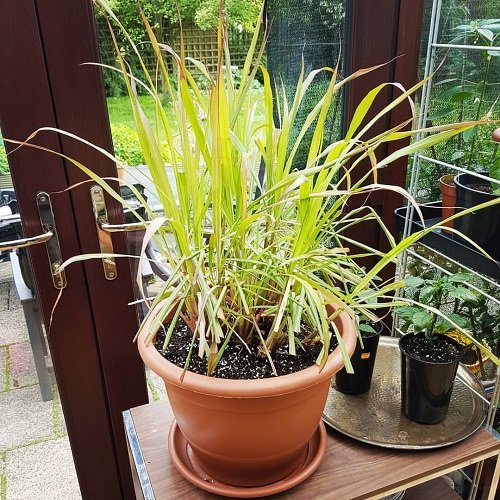
Botanical Name: Cymbopogon
Common Names: Andropogon citratus, Andropogon flexuosus, Ceylon Citronella Grass, Citronnelle de Ceylan, Citronnelle de Java, Citronnelle de Madagascar, Cymbopogon nardis, Fever Grass, Herbe Citron, Hierba de Limón, Jonc Odorant, Verveine Indienne
Lemongrass is a perennial grass of the grass family, a culinary herb in Asian cuisines, and a medicinal herb in India. People cultivate these medicinal plants because of their lemon-like aroma and therapeutic properties. The grass genus is a common ingredient in many deodorants, soaps, tea, and cosmetics.
- Great for aromatherapy
- Detoxifies the body
- Helps with sleeping disorders
- Cures fever
- Prevents rheumatism
- Cleanses the skin
- Protects body cells
Note: It’s unsafe to take lemongrass by mouth when you’re breastfeeding or pregnant.
Low Maintenance Houseplants With Health Benefits
41. Calotropis Gigantea
Botanical Name: Calotropis procera
Common Names: Giant Milkweed, Crown Flower, Giant Calotrope, Swallow-wort
Crown flower has a bunch of waxy white or lavender flowers, which makes them an excellent choice for floral arrangements. Growing crown flower in your yard isn’t difficult as long as you put them near an area with full sun. It holds a strong position when it comes to Ayurvedic treatments and medicinal plants:
- Cures digestive disorders
- Helps relieve a toothache
- May help with snakebites
- On an inhalation, cures a cough
Note: Calotropis is unsafe to use, especially in high doses; it can lead to heart problems.
42. Costus

Botanical Name: Saussurea costus
Common Names: Betalauri, wild ginger, lakhut, and keukand
Costus are wild medicinal plants of the Costaceae family with an approximate height of 30-40 cm. The oil extracts of the root and the root itself are used for treating many medical ailments. It’s a significant component in cosmetics, fixatives, and food flavoring products.
- The root is helpful in treating worm infections
- The oil is useful in curing dysentery
- Stimulates digestion
- May relieve asthma
- Effective in cholera
Note: Not enough information is available on the effects of costus on pregnant or breastfeeding women. Avoid it to stay on the safe side.
43. Candy Leaf
Botanical Name: Stevia rebaudiana
Common Names: Sweetleaf, Sugarleaf, and Chrysanthemum
Candy leaf is a plant species of the sunflower family and native to Brazil and Paraguay. As the name says, its taste is as sweet as candy. Cultivators widely prefer to grow it for its sweet leaves, which act as a source for many sweetener products. It has gained attention from fitness lovers all over the world since it’s a natural alternative to processed sugar.
- Minimally effective for diabetes
- Helps in controlling weight
- Lowers blood sugar levels
- Prevents pancreatic cancer
- Fights allergies
Note: Although food administrations declare stevia to be safe, raw stevia herb may harm your kidneys.
44. Marshmallow
Botanical Name: Althaea Officinalis
Common Names: Marsh Mallow, Malvaceae, Hollycock, Genus Althaea, White Mallow, Mallards, Mauls, Schloss Teai, Cheeses, Mortification Koot, Mortification root, Sweet weed, and Wymote
Native to Europe, Western Asia, and North Africa, marshmallows are medicinal plants. The leaves, flowers, and roots of the plant are long used for herbal medicines. Other than herbal uses, they have several culinary uses as well.
- Soothes urinary infections
- Reduces respiratory problems
- Treats inflammation
- Calms burns
Note: The plant is safe to use, but it may interact with any other drug/medicine. So, it’s better to consult a doctor before using it.
45. Great Burdock
Botanical Name: Arctium lappa
Common Names: Arctium, Arctium tomentosum, Bardana, Bardana-minor, Bardanae Radix, Bardane, Burdock Root Extract, Burr Seed, Clotbur, Cocklebur, Cockle Buttons, Edible Burdock, Fox’s Clote, Gobo, Glouteron, Grande Bardane, Great Bur
Cultivated in gardens for its roots, it’s a plant from the sunflower family. This biennial plant can reach a height of 3-9 feet with thistle-like purple flowers. Every part of the plant – leaves, roots, flowers, and medicinal plant seeds is used to treat a sore throat, insect bites, flu, constipation, diabetes, eczema, and many more diseases.
- Prevents high blood glucose
- Cleanses the blood
- Eliminates free radicals
- Reduces internal inflammation
- May prevent cancer
Note: Great burdock might slow the blood clotting process; people with an injury must restrain from taking it. Moreover, it must not be consumed during pregnancy.
46. Chinese Yam
Botanical Name: Dioscorea Polystachya
Common Names: Igname, Nagaimo, Pochrzyn chinski, Iams kitaiskii, Huai sua, Name de China, Igname de Chine, Chinese potato, Wild yam, Verrilaivalli, and Malay
Chinese yam is an invasive plant from the yam family. This twining vine usually grows to a height of 3-5 meters and twines in a clockwise motion. The flowers of the plant smell like cinnamon, and that’s why it’s also referred to as cinnamon-vine. Here are the uses of these medicinal plants:
- Helps in poor appetite
- Accelerate the growth of healthy tissues
- Cures menstrual disorders
- Lowers fatigue
- Helps in pre-menstrual syndrome
- Aids in gallbladder problems
Note: Large amounts of Chinese yam can cause vomiting and nausea.
Spider Plant Benefits (Scientifically Proven)
47. The Great Yellow Gentian
Botanical Name: Gentiana lutea
Common Names: Gentian, Bitter Root, Bitterwort, Gall Weed, Geneciana, Gentiana acaulis, Gentiana kochiana, Gentiana lutea, Gentianae Radix, Gentiane, Gentiane Acaule, Pale Gentian, Racine Amère, Stemless Gentian, Yellow Centiyane, and Wild Gentia
The great yellow gentian is a herbaceous yellow-flowered medicinal plant of the gentian family and originates from central and southern Europe. One of its common names is “Bitterwort” because of its extremely bitter taste. Many herbal bitters and soft drinks use the roots of the great yellow gentian as a critical ingredient.
- Stimulates the digestive system
- Regulates weight
- Treats oral yeast infection
- Cures ringworm
- Effective for sinus infection
- Eases heart burns
Note: People with low blood pressure should refrain from using it. Stop using gentian at least a week before or after surgery.
48. Vetiver
Botanical Name: Chrysopogon zizanioides
Common Names: Cuscus grass, Khas-khas, Khus-khus, Ramacham, and Vettiver
It’s a bunchgrass, which is most common in India, especially in the western and northern parts of the country. The roots of the grass are regarded as medicinal plants and also used to extract oil for the manufacture of many cosmetics and aromatherapy.
- Fights lice
- Repels insects
- Reduces stress
- Effective for apnea or insomnia
- Helps with joint and muscle pain
- Treats ADHD
Note: Taking Vetiver during pregnancy might result in a miscarriage. Likewise, maintain distance from it if you’re lactating.
Great Dracaena Plant Benefits (Proven In Studies)
49. Witch Hazel
Botanical Name: Hamamelis virginiana
Common Names: Witch Hazel, Snapping Hazel, Spotted Alder
Witch Hazel, scientifically known as Hamamelis virginiana, is a shrub native to North America. Its bark, leaves, and twigs are used for various medicinal purposes. Here are the benefits and uses of these medicinal plants:
- Skin Soothing
- Astringent Properties
- Hemorrhoid Relief
- Anti-Inflammatory
- Soothing Sunburn
- Sore Throat Gargle
Note: While witch hazel is generally safe for topical use, it’s important to do a patch test before applying it to larger areas of the skin, as some individuals may be sensitive to it. If you’re pregnant, nursing, or have any underlying health conditions, consult a healthcare professional before using witch hazel.
50. Yellow Dock
Botanical Name: Rumex crispus
Common Names: Yellow Dock, Curled Dock, Curly Dock, Narrow Dock
Yellow Dock is another of the best medicinal plants and is a perennial flowering plant found in many parts of the world. Its root and leaves are often used for their potential health benefits. Here are the benefits and uses of Yellow Dock:
- Digestive Aid
- Detoxification
- Skin Health
- Iron Absorption
- Antioxidant Properties
- Blood Cleansing
Note: Yellow Dock should be used with caution, as excessive consumption may lead to digestive discomfort. You should consult a healthcare professional before using Yellow Dock for medicinal purposes.
Disclaimer
This article on best medicinal plants is created for informational purposes only. Always consult your physician before taking anything. This general information is not intended to diagnose any medical condition or to replace your healthcare professional.






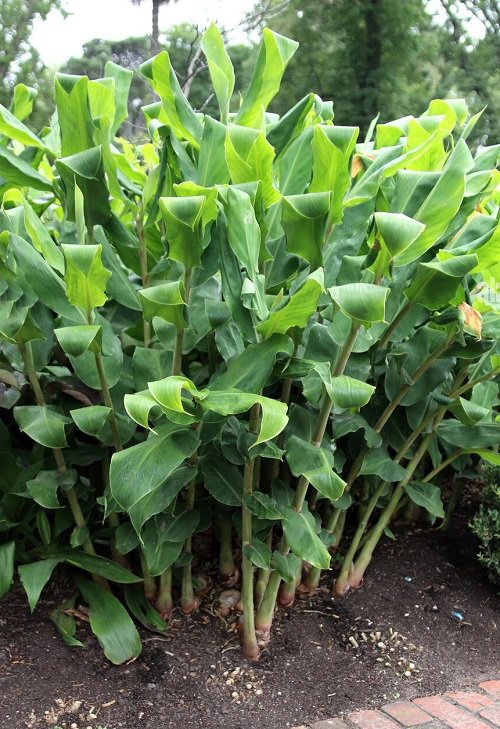

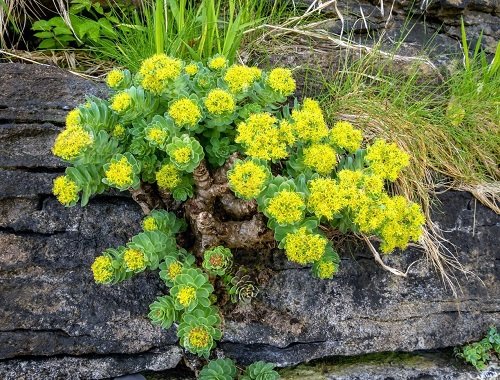

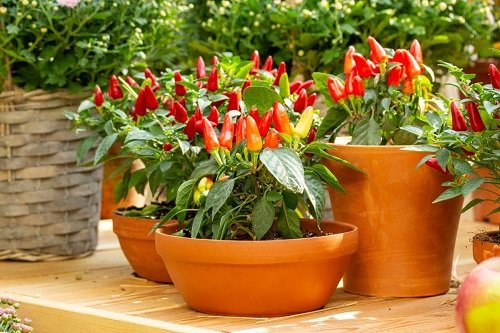



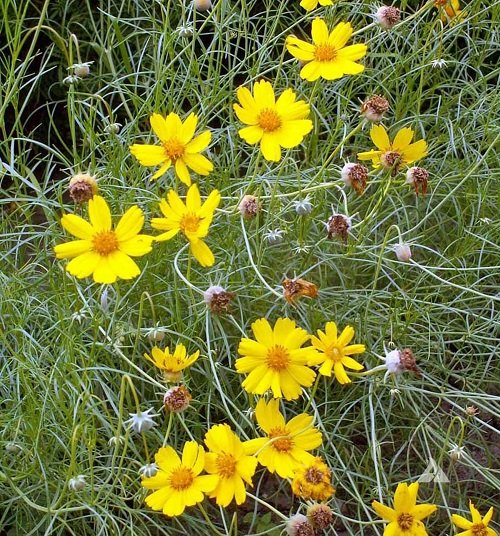




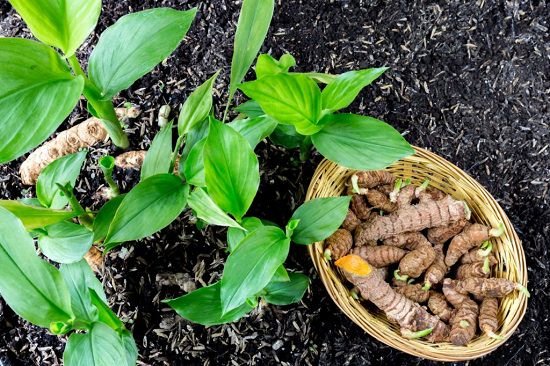
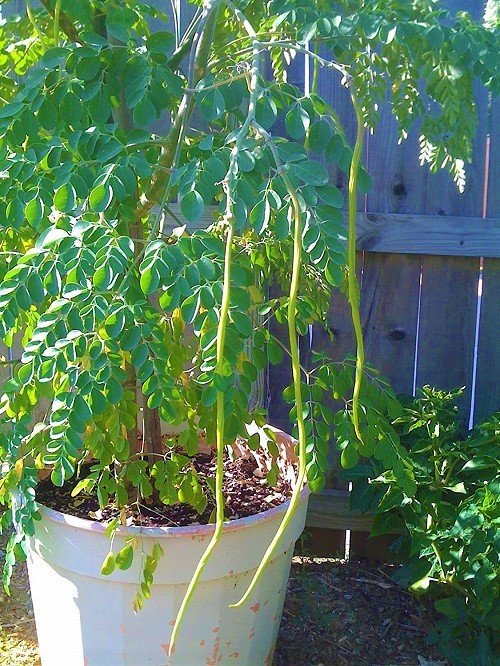



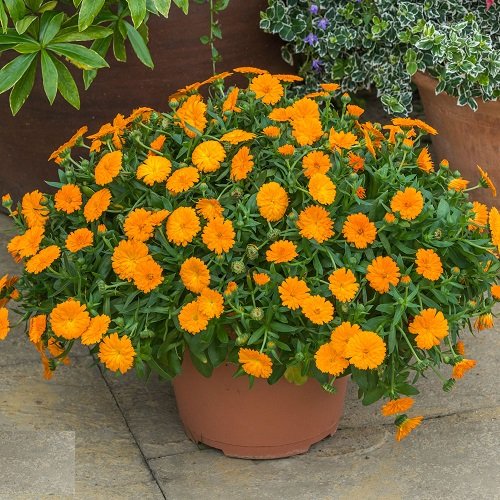
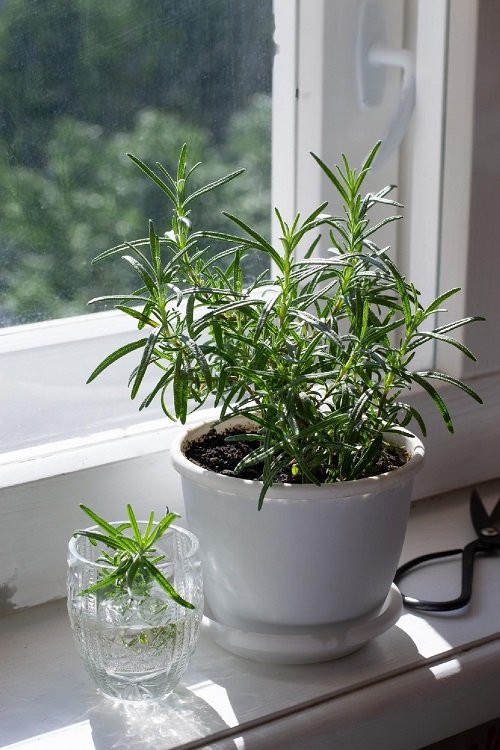

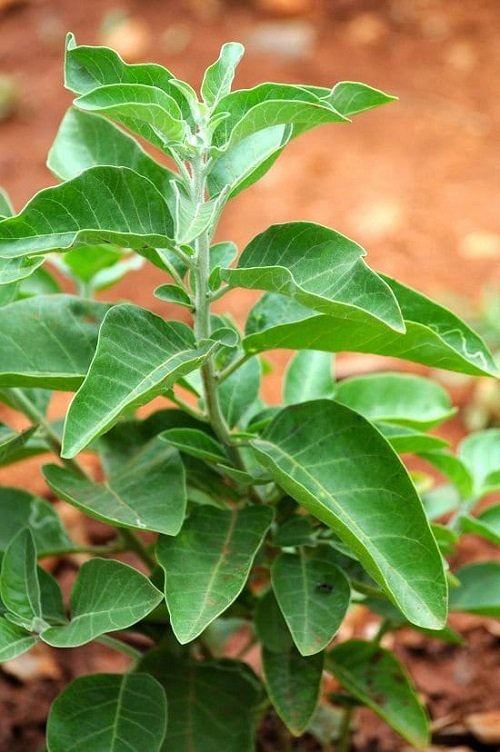
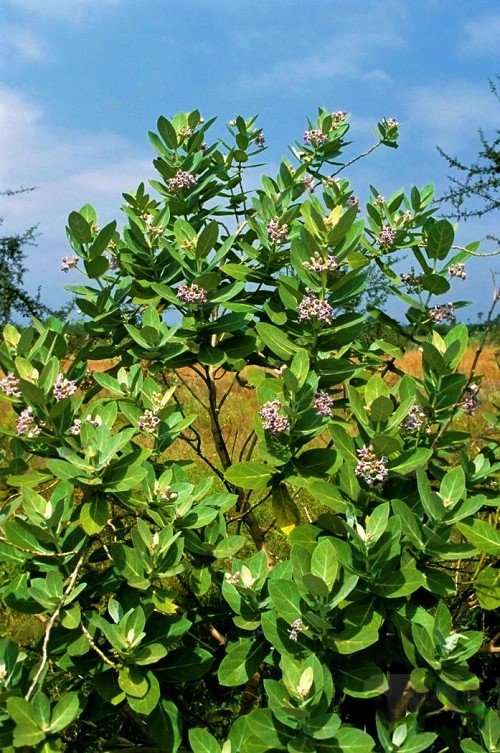
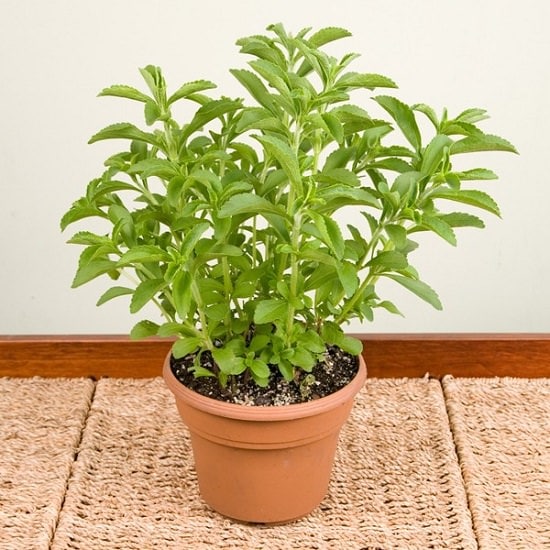

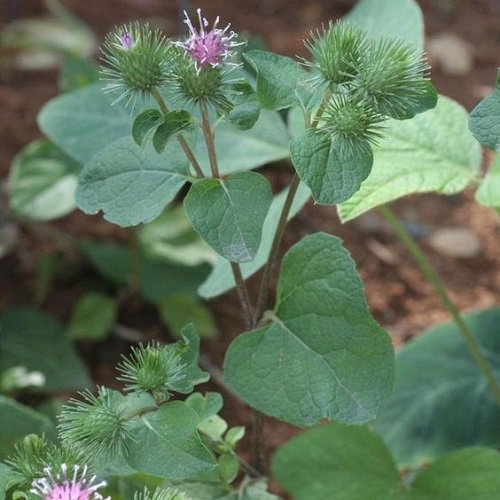
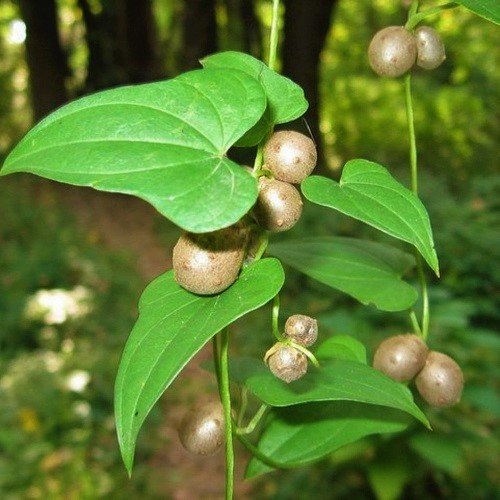
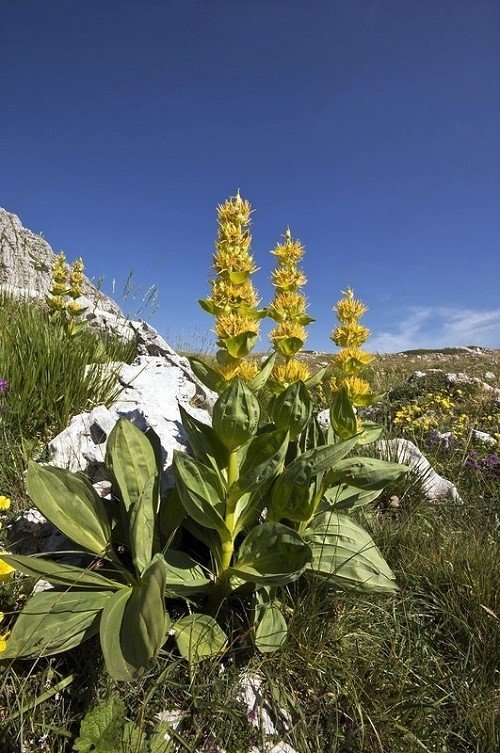

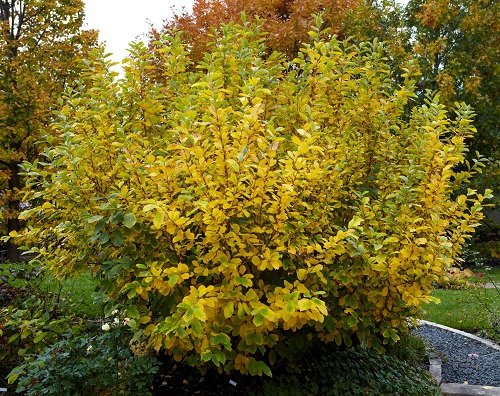


Very educational. Loved it!
Thank you for sharing this article about the best medicinal plants. These can be especially helpful for those who don’t like taking medicines as well as to those who live in the provinces and have no access to hospitals or clinics.
Thank you for more usefull information about the medicinal plants.
Can you recommend a book I could buy for reference?
I would like to buy for reading the book which include the information of usages and plantation system of all these.
Example: how can i store up all these for future medication?
and how can i get help myself for planting all these flowers?
I would be really grateful if you can kindly reply me and help me regarding my question.
Thank you and best regards,
Mang
Exactly I need all these plants to plant, to have my own business in my area in South Africa
I have liked the plants and there useful and how it works thanks
Know the preparation of the medicine how do we prepare them
Hi! This was super helpful. I wanted to cite this source and am missing some information, could you tell me the name of the author and the date published so I can properly cite this page? Thank you!
Hello Iroha, Thank you for reaching out.
You can cite it with the name BalconyGardenWeb, the date of publishing is 2019-02-16.
I have a friend who had taken traditional medicine and a diet plan from Nze Njoku Herbal Home on google to treat Arthritis and High Blood Pressure and for some years now he looks normal. From severe pain always a sick guy Now he looks so healthy and enjoying normal productive life😊 Praise God
im looking to use this information to open my own location.
The article “100 Best Healing Plants You Can Grow At Home” is a great resource for anyone looking to add some medicinal plants to their garden. The article lists 10 of the most popular and effective medicinal plants, along with information on their health benefits, growing requirements, and how to use them.
I particularly liked the way the article was organized. The author started by providing a brief overview of the benefits of growing medicinal plants at home. Then, they listed the 10 plants, one by one, providing detailed information on each one. This made it easy to find the information I was looking for.
I also appreciated the fact that the author included information on how to use the plants. This is important, because not all medicinal plants are used in the same way. Some can be eaten, while others are used to make teas or tinctures. The author also included some tips on how to care for the plants, which is helpful if you’re not familiar with gardening.
Overall, I thought “10 Best Healing Plants You Can Grow At Home” was a well-written and informative article. It’s a great resource for anyone looking to add some medicinal plants to their garden.
Here are some additional thoughts I have about the article:
* I would have liked to see more information about the scientific evidence behind the health benefits of the plants.
* The article could have also included more information about the different ways to use the plants, such as in tea, tinctures, or essential oils.
Overall, I thought the article was a great resource. It was informative, well-written, and engaging. I would definitely recommend it to anyone looking to learn more about medicinal plants.
Here are some of the plants that I found most interesting:
* **Tulsi:** This plant is known for its many health benefits, including boosting the immune system, reducing stress, and improving sleep.
* **Aloe vera:** This plant is a natural healer that can be used to treat a variety of skin conditions, including burns, cuts, and sunburns.
* **Chamomile:** This plant is known for its calming effects and can be used to treat anxiety, insomnia, and stomach upset.
* **Peppermint:** This plant is a natural digestive aid and can be used to treat nausea, vomiting, and indigestion.
* **Echinacea:** This plant is a natural immune booster and can be used to treat colds, flu, and infections.
I think these plants are all great choices for people who are looking to add some medicinal plants to their garden. They are all relatively easy to grow and care for, and they have a wide range of health benefits.